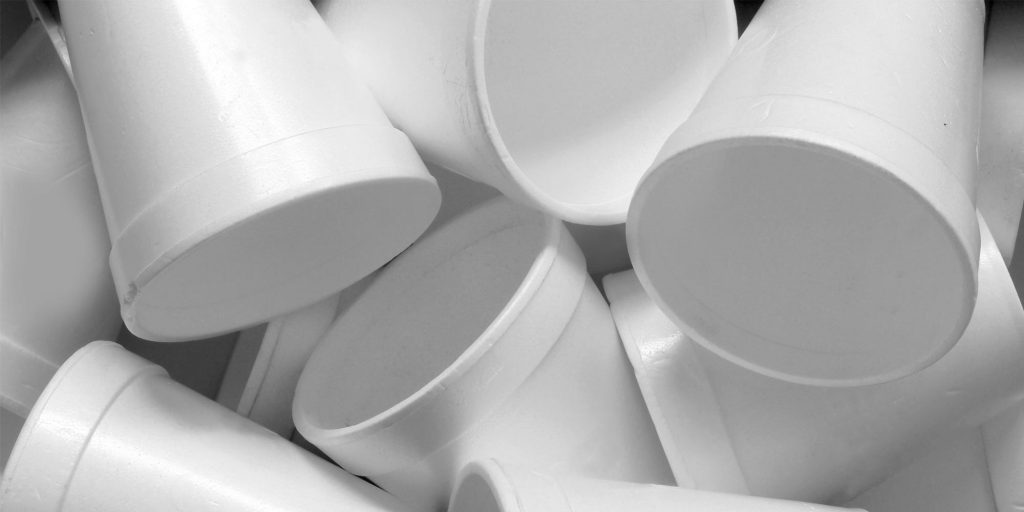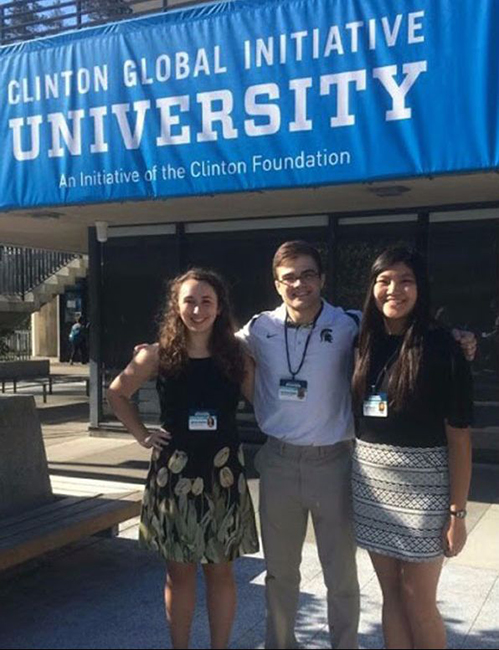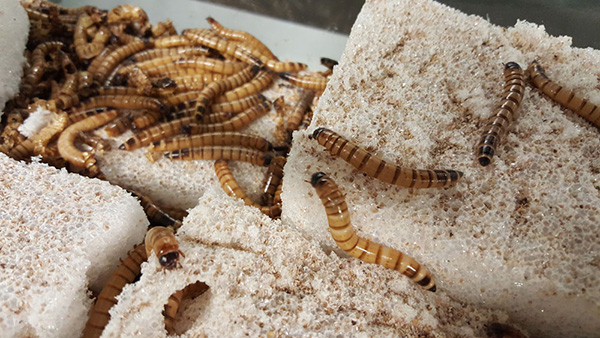
An MSU undergraduate team, which includes sophomore English major Lindsay Mensch, has built a system on campus to explore the ability of mealworms to decompose polystyrene (Styrofoam) and to find useful applications for the organic waste that is produced from this.

Their work is based on research out of Stanford University, published last fall in Environmental Science and Technology, that found mealworms can eat Styrofoam and turn it into compost that can be safely used on soil. Long considered to be non-biodegradable, this discovery may just hold the key to solving the Styrofoam pollution problem around the world.
Besides Mensch, MSU’s three-person undergraduate team includes Kirsten West, sophomore Packaging major, and Matthew Huber, sophomore Environmental Studies and Sustainability major. The team received a $3,200 grant from the Residential Initiative on the Study of the Environment (RISE) for their work.
“My grant team and I created our own mealworm-Styrofoam decomposition system here on campus,” Mensch said. “We are experimenting with large-scale and long-term feasibility of these systems while working to educate our peers and others about mealworms as well as the dangers of Styrofoam.”
Decreasing the amount of toxins in the environment is vital for the health of all life on our planet.
LINDSAY MENSCH
The team’s ultimate goal is to reduce the amount of polystyrene waste produced on campus and to divert the rest from landfills by utilizing the natural powers of mealworms. They also are educating the MSU community about the harmful human and environmental effects of Styrofoam waste.
“Decreasing the amount of toxins in the environment is vital for the health of all life on our planet,” Mensch said. “There are lots of bans on Styrofoam in California and other places. Besides our mealworms research on getting rid of the waste, we’d like to work on preventing Styrofoam from even being used.”
People were amazed that something so simple as mealworms eating Styrofoam could potentially have such a huge, positive effect.
LINDSAY MENSCH
The MSU team was selected to attend and present their research at the 2016 Clinton Global Initiative University (CGI U) annual meeting at UC Berkeley in April. Launched in 2007 by former President Bill Clinton to engage the next generation of leaders on college campuses around the world, the 2016 CGI U brought together more than 1,200 students to make a concrete difference in the initiative’s five focus areas: Education, Environment and Climate Change, Peace and Human Rights, Poverty Alleviation, and Public Health.
“Displaying our research was a high point,” Mensch said. “People were amazed that something so simple as mealworms eating Styrofoam could potentially have such a huge, positive effect.”

This summer, Mensch is interning at the Kellogg Biology Station, MSU’s largest off-campus education complex located on Gull Lake in Hickory Corners, Mich., just northeast of Kalamazoo. In the fall, she plans to return to campus and will continue her work, along with her team members, on the mealworms research.
The team plans to hold outreach and engagement workshops throughout the 2016-17 academic year to educate about Styrofoam waste and reduction.
“We’ve talked about expanding our focus,” Mensch said. “Besides campus use, there are a lot of fast food and other restaurants around campus that use Styrofoam. If we could push even further into Lansing as awhole, the impact could be much greater.”


